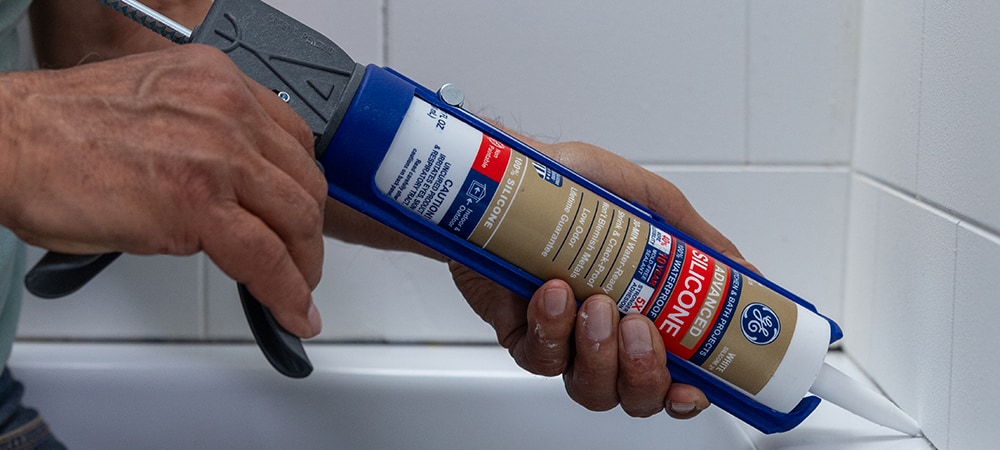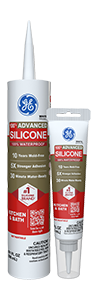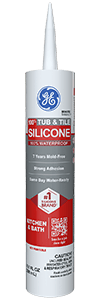Advertising might win you customers, but excellent work is how you keep them. The right plumbing sealant could move the customer satisfaction meter in your favor, while the wrong one could cause your bank figures to dwindle. This article guides you on what works best for most situations, whether for routine maintenance or new installations.
Strength, flexibility, and durability are important factors to consider when gauging a project’s best plumbing sealant.
What to look for in a plumbing sealant
There are a variety of plumbing silicone sealants available for each project. While there might not be a blueprint for selecting an appropriate plumber sealant, there are a few key points to remember.
Drying time
Drying time dictates the project’s trajectory in several ways. A quick dry time sounds convenient, and it would save you precious time when fixing a leak or sealing around a faucet, but this means you have less time to make adjustments when necessary.
Where project completion time is the highest priority, choose a quick drying and curing plumbing sealant. When precision is more important, the extra seconds provided by a moderately curing sealant can go a long way in ensuring a professional finish.
Flexibility
Plumbing structures are exposed to variations in temperature and pressure that cause them to expand and contract. These shifts may cause widening of gaps and cracks that may exacerbate any preexisting complications. Excellent flexibility in a silicone sealant allows the sealant to shift with the underlying structures without cracking or breaking down over time.
Silicone sealants, unlike acrylic caulk, have superior flexibility and confer strength and durability to any project.
Lifespan
When choosing a plumbing sealant for leaks (such as around a faucet), it would be best to ensure the sealant will last longer than the surface it adheres to. A longer lifespan translates to fewer callbacks and happier clients, which guarantees you remain in business.
Adhesion to different materials
As a professional, you are bound to work with a variety of materials for different clients and projects. Whether you’re working with metal, plastic, vinyl, concrete, wood, or any other material, a versatile plumbing sealant will always guarantee you have the right tool for the job.
Durability
Weatherproof, waterproof, and temperature-stability are some of the attributes to look out for when selecting a good plumbing sealant. Durability directly affects the overall lifespan of an installation or repair which similarly affects customer satisfaction.
A plumbing silicone sealant is engineered to withstand wide temperature fluctuations, working with extremely hot and cold temperatures characteristic of plumbing installations. In addition to thermal stability, good plumbing sealants have excellent moisture, mold, and mildew resistance.
Safety standards
Plumbing sealant is bound to interact with water meant for household or commercial use. A non-toxic sealant that is safe for potable water, therefore, has an edge over other sealants. Watch out for industry certifications and safety compliance to avoid legal implications for your projects.
An odorless plumber sealant also eases the application process by facilitating indoor use where ventilation may be inadequate.
Benefits of investing in a quality silicone sealant
There’s a lot to consider when picking out a worthy plumbing sealant for leaks but, so far, most of the benefits seem to be leaning toward your clients. Keeping your clients happy is important, but as in any business, you have to answer the question “What’s in it for you?”
The following section seeks to highlight some of the benefits of investing in a quality silicone sealant.
Repeated business and customer satisfaction
What’s better than a paying customer? A paying customer who comes back. Using high-quality plumbing sealant results in durable repairs and installations that translate to fewer callbacks and happier clients. Whenever the need for a reliable plumber arises, you can rest assured that your customers will have your name in mind. You might also benefit from referred clients.
Higher-quality jobs
Your competitors may settle for lower-quality plumber sealant, but investing in higher quality enables you to stand out. Additionally, a higher quality sealant enables precise application and more professional finishing ensuring your work is of the highest standard.
Easier application
High quality transcends the silicone sealant formula. Better-engineered nozzles, uniform consistency, and smooth flow are just some of the features that make high-quality sealant a joy to work with. For hard-to-reach areas and time-conscious projects, you’ll be glad you went the extra mile by getting a high-quality plumbing sealant.
The plumbing market is filled with several types of plumbing sealants with varying quality levels. Choosing the right one can prove to be a daunting task, even for the seasoned professional. However, our detailed guide allows you to start ahead of the curve when shopping for quality. There are a lot of benefits to investing in quality and both you and your clients can enjoy them considerably.
To find GE products near you, check out our Where to Buy page.
FAQs
Below are some frequently asked questions concerning plumbing sealants:
What is the best plumbing sealant for leaks?
The best plumbing sealant for leaks is silicone-based (avoid caulk). Silicone sealants offer durability and strength to any project without compromising on finishes.
How long does a plumbing sealant take to dry?
Curing and drying time vary among different types of plumbing sealants. Most sealants take 24 hours to dry. Refer to product specifications for more accuracy.
Is plumbing sealant safe for use in potable water systems?
Yes, many plumbing sealants are safe for use in potable water systems. However, refer to the product’s specifications for safety certifications.



